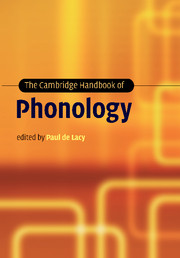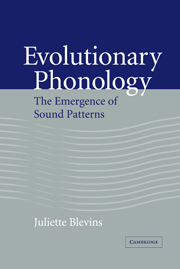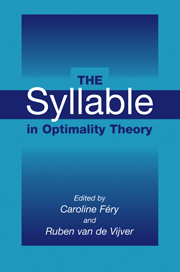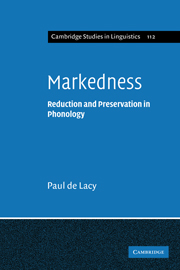The Cambridge Handbook of Phonology
Phonology - the study of how the sounds of speech are represented in our minds - is one of the core areas of linguistic theory, and is central to the study of human language. This handbook brings together the world's leading experts in phonology to present the most comprehensive and detailed overview of the field. Focusing on research and the most influential theories, the authors discuss each of the central issues in phonological theory, explore a variety of empirical phenomena, and show how phonology interacts with other aspects of language such as syntax, morphology, phonetics, and language acquisition. Providing a one-stop guide to every aspect of this important field, The Cambridge Handbook of Phonology will serve as an invaluable source of readings for advanced undergraduate and graduate students, an informative overview for linguists and a useful starting point for anyone beginning phonological research.
- The most up-to-date, comprehensive and detailed overview of phonology to date
- Authors are the most well-known and leading researchers in the field
- Focuses on the most recent theories and the most recent research
Product details
February 2007Hardback
9780521848794
708 pages
244 × 170 × 38 mm
1.32kg
Available
Table of Contents
- 1. Introduction: themes in phonology Paul de Lacy
- Part I. Conceptual Issues:
- 2. In pursuit of theory Alan Prince
- 3. Functionalism Matthew Gordon
- 4. Markedness Keren Rice
- 5. Derivations and levels of representation John J. McCarthy
- 6. Representation John Harris
- 7. Contrast Donca Steriade
- Part II. Prosody:
- 8. The syllable Draga Zec
- 9. Feet and metrical stress René Kager
- 10. Tone Moira Yip
- 11. The phonology of intonation Carlos Gussenhoven
- 12. The interaction of tone, sonority and prosody Paul de Lacy
- Part III. Subsegmental Features:
- 13. Segmental features Tracy Alan Hall
- 14. Local assimilation and constraint interaction Eric Bakovic
- 15. Harmony Diana Archangeli and Douglas Pulleybank
- 16. Dissimilation in grammar and the lexicon John Alderete and Stefan Frisch
- Part IV. Internal Interfaces:
- 17. The phonetics-phonology interface John Kingston
- 18. The syntax-phonology interface Hubert Truckenbrodt
- 19. Morpheme position Adam Ussishkin
- 20. Reduplication Suzanne Urbanczyk
- Part V. External Interfaces:
- 21. Diachronic phonology Ricardo Bermúdez-Otero
- 22. Variation and optionality Arto Anttila
- 23. Acquiring phonology Paula Fikkert
- 24. Learnability Bruce Tesar
- 25. Phonological impairment in children and adults Barbara Bernhardt and Joseph Stemberger.






